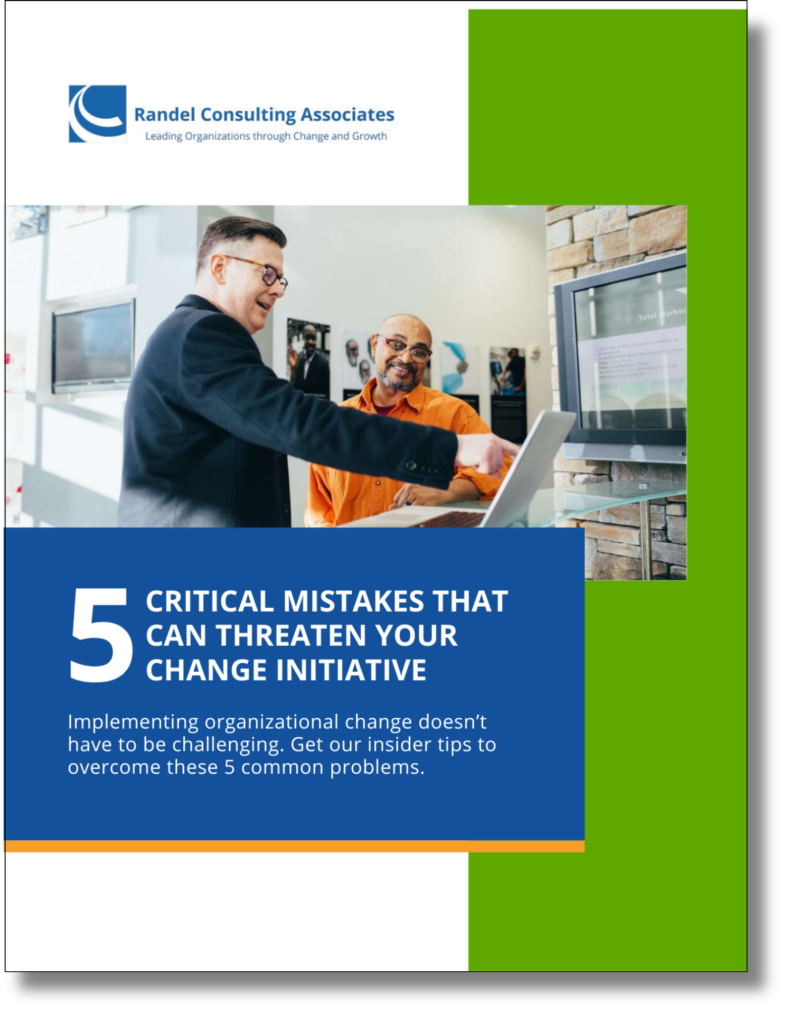Implementing organizational change doesn’t have to be challenging. If you’re a leader interested in how to do this well, I’ve got 5 insider tips to share with you.
Change is the only constant, the old adage goes.
Organizations need to change to meet new demands, and an evolving marketplace. When navigated successfully, change encourages innovation, develops staff members and their skills, leads to better business opportunities and improves staff morale. It helps you retain a competitive edge, and remain relevant in your business area.
The unfortunate reality though, is that large-scale organizational changes often fail. More than one study has suggested that 70% of these transformations do not meet their objectives, and can result in far more negative consequences than positive ones. This is demoralizing for those involved, and can foster stakeholder skepticism towards future change initiatives.
There is another way.
Learn from these 5 challenges, so you can more effectively lead your team through change.
- Mistake 1: Springing Change on People
Springing a significant organizational change on your employees will catch them by surprise, leading to negative reactions and resistance. When caught off guard, they may feel confused and uncertain about the future. This in turn can lower morale, increase anxiety and reduce productivity among your workforce.
- Mistake 2: Overly Confident Planning
A common pitfall is to place your confidence in an overly ambitious and detailed plan. As a leader, you might prepare a plan assuming everything will proceed flawlessly, without any interruptions or complications. This unrealistic sense of confidence can then create a perception of ‘magical thinking’ among staff, leading to skepticism and distrust towards the leadership’s approach. Assumptions and risks are also missed during the planning process, further complicating change implementation.
- Mistake 3: Holding on to Control
In the dynamic landscape of organizational change and growth, a common challenge arises when leaders presume they can control and dictate the pace of change.
Employers and stakeholders directly impacted by the change are therefore excluded from participating in the planning and decision-making processes. As leaders tend to be removed from the ground-level intricacies, the lack of perspective can lead to unrealistic expectations. Feedback loops from those at the operational level become slower and less candid. Staff become disenchanted and disaffected as they perceive a top-driven process that overlooks the day-to-day realities faced by them. - Mistake 4: Misunderstanding Resistance
In the context of guiding an organization through change, a common mistake is when leaders misunderstand resistance. Questions, challenges, pushback and disengagement are considered a direct threat to the change initiative, and even to the leadership itself. Along with taking it personally, this tends to be a misreading of the situation when considering challenge as defiance rather than what it really is – confusion and a search for clarity.
- Mistake 5: Overlooking Key Stakeholders
When assessing the need for change and planning how the initiative will unfold are done in isolation by leadership, key stakeholders are overlooked. This can lead to blind spots in the change strategy, missing out on critical considerations. Further, change initiatives are sometimes approached from the lens of what the organization or leadership perceives as necessary. This narrow perspective doesn’t consider the unique needs, concerns and viewpoints of those directly affected by the change, and these aren’t considered in the initial plan.
Listen to my podcast interview in which I explore these challenges.
Download my article to read the tips on how effective leaders tackle each of these organizational change mistakes!
And learn more about how I work with leaders like you to support you in leading change and growth with calm and confidence.

